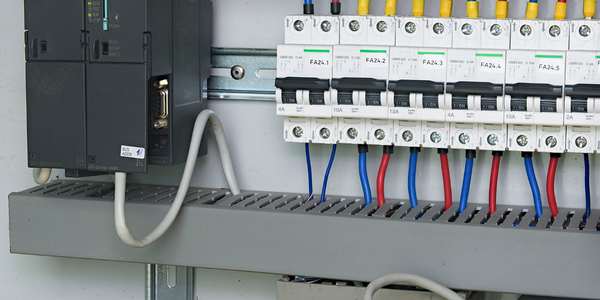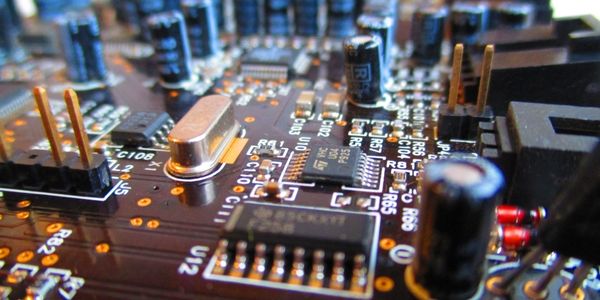Manufacturer Protects Intellectual Property With ThreatDefend Platform
公司规模
Large Corporate
产品
- ThreatDefend Deception and Response Platform
- BOTsink engagement servers
- ThreatStrike deceptive credentials
技术栈
- Deception Technology
- Threat Analysis
- Incident Response
实施规模
- Enterprise-wide Deployment
影响指标
- Cost Savings
- Customer Satisfaction
- Productivity Improvements
技术
- 网络安全和隐私 - 网络安全
- 网络安全和隐私 - 入侵检测
- 网络安全和隐私 - 安全合规
适用行业
- 半导体
- 电子产品
适用功能
- 商业运营
- 质量保证
用例
- 入侵检测系统
- 网络安全
- 远程资产管理
服务
- 系统集成
- 网络安全服务
关于客户
The customer is a global semiconductor manufacturer with a significant investment in intellectual property, particularly in chip design within highly sensitive labs. The organization operates multiple locations across different continents, adding complexity and increasing the number of potentially exploitable endpoints for cyberattacks. The infosec team is particularly concerned about advanced threats that could penetrate their prevention systems and extract valuable information, especially through targeted stolen credential attacks against employees. The loss of critical intellectual property would not only reveal technological advancements but also diminish the company's competitive edge, significantly impacting their bottom line.
挑战
A major problem the organization had with their cyber security infrastructure was that they had extremely limited visibility into the subnets that contained their most critical data. If these subnets were breached, the team would have significant difficulties detecting the threat inside. Another challenge the organization was facing was the number of alerts that were generated by their other security devices. The alerts generated were not only high in volume, but many times were false positives or unsubstantiated. The impact that the alerts had on the team was that they were unable to conduct the research necessary on these alerts to decipher between substantiated alerts and false positives. Therefore, they could not be confident that if they escalated an alert it would not be a false positive and a waste of resources to investigate. A situation such as this is extremely problematic for any infosec team because it forces them to choose between wasting resources investigating false positives or hoping that their incident response tools will be good enough to remediate an advanced threat that had penetrated their system. Facing this choice, the team was not confident in their security controls to protect their critical intellectual property.
解决方案
The infosec team deployed the ThreatDefend Deception and Response Platform across multiple locations in their critical subnets to increase the visibility of in-network threats. As the team operationalized ThreatDefend deception, the visibility gap that had widened in their network immediately closed and their alerts were now substantiated so that threats could be quickly addressed. Within 30 minutes, they had complete visibility across their entire network and saw high-fidelity alerts that were previously unattainable. With immediate visibility, the team is now alerted to only the malicious activity inside of their network. They now had the visibility they were looking for to catch in-network threats with zero false positives. But the team needed a solution that could do more than just detect. Taking advantage of the power of the ThreatDefend™ solution to analyze threats and produce detailed attack forensics, the team has configured their network so that blocked URLs from their firewall are automatically redirected to the ThreatDefend platform for analysis. Letting the entire attack play out, the ThreatDefend captures all of the activity and relays the information in a variety of formats. The detailed forensics allow the infosec team to have more visibility into not only what an attack is doing, but how to better prevent it in the future.
运营影响
数量效益

Case Study missing?
Start adding your own!
Register with your work email and create a new case study profile for your business.
相关案例.

Case Study
Remote Temperature Monitoring of Perishable Goods Saves Money
RMONI was facing temperature monitoring challenges in a cold chain business. A cold chain must be established and maintained to ensure goods have been properly refrigerated during every step of the process, making temperature monitoring a critical business function. Manual registration practice can be very costly, labor intensive and prone to mistakes.
Case Study
KINESYS Semiconductor Factory Automation Software
KINESYS Software provides both Integrated Device Manufacturer (IDM) and Original Equipment Manufacturer (OEM) customers world-class software products and solutions for advanced wafer and device traceability and process management. KINESYS offers state of the art database technology with a core focus on SEMI standards. KINESYS’ challenge was to make back-end processing failure-free and easy to use for clients while supporting licensing models more adaptable to changing industry needs.

Case Study
Predictive maintenance in Schneider Electric
Schneider Electric Le Vaudreuil factory in France is recognized by the World Economic Forum as one of the world’s top nine most advanced “lighthouse” sites, applying Fourth Industrial Revolution technologies at large scale. It was experiencing machine-health and unplanned downtime issues on a critical machine within their manufacturing process. They were looking for a solution that could easily leverage existing machine data feeds, be used by machine operators without requiring complex setup or extensive training, and with a fast return on investment.

Case Study
Cloud Solution for Energy Management Platform-Schneider Electric
Schneider Electric required a cloud solution for its energy management platform to manage high computational operations, which were essential for catering to client requirements. As the business involves storage and analysis of huge amounts of data, the company also needed a convenient and scalable storage solution to facilitate operations efficiently.








